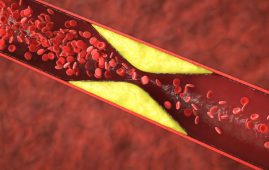

A recent series of studies published in The Lancet Oncology sheds light on the pressing challenges of cancer care in South Asia. This region, home to over 1.92 billion people across Afghanistan, Bangladesh, India, and other SAARC countries, faces a rising cancer burden, particularly with cervical, oral, and lung cancers. Despite lower cancer incidence rates than the global average, mortality rates are alarmingly high due to late diagnoses, limited early detection programs, and inadequate healthcare infrastructure.
Efforts to improve oncology care are hindered by a shortage of trained healthcare professionals such as oncologists and radiation technologists. Rural areas are especially underserved, and healthcare disparities between urban and rural regions exacerbate the issue. Furthermore, cultural stigmas and lack of awareness about cancer symptoms and risk factors, such as smoking and chewing betel nut, complicate efforts to improve cancer prevention and treatment. Read more on how AI can help detect cancer.
Key recommendations from the study emphasize strengthening national cancer control programs, improving healthcare infrastructure, and investing in the education and retention of skilled oncology professionals. The establishment of cancer registries is also critical to improving data collection, which would guide better policy decisions and resource allocation.
In refugee settings, particularly within the Rohingya refugee camps in Bangladesh, cancer types such as hepatocellular carcinoma, oral cancer, and cervical cancer are becoming more prevalent. The lack of access to adequate healthcare facilities and resources further compounds the situation, requiring multi-pronged interventions, including cancer screening, treatment, and palliative care.
A coordinated regional effort, including awareness campaigns and partnerships, is essential for tackling these cancer disparities. By strengthening regional collaboration, SAARC nations can mobilize resources and improve access of cancer care in south asia, ensuring that the population is better equipped to address the growing cancer incidence.
Source: University of Pittsburgh
more recommended stories
 Caffeine and SIDS: A New Prevention Theory
Caffeine and SIDS: A New Prevention TheoryFor the first time in decades,.
 Microbial Metabolites Reveal Health Insights
Microbial Metabolites Reveal Health InsightsThe human body is not just.
 Reelin and Cocaine Addiction: A Breakthrough Study
Reelin and Cocaine Addiction: A Breakthrough StudyA groundbreaking study from the University.
 Preeclampsia and Stroke Risk: Long-Term Effects
Preeclampsia and Stroke Risk: Long-Term EffectsPreeclampsia (PE) – a hypertensive disorder.
 Statins and Depression: No Added Benefit
Statins and Depression: No Added BenefitWhat Are Statins Used For? Statins.
 Azithromycin Resistance Rises After Mass Treatment
Azithromycin Resistance Rises After Mass TreatmentMass drug administration (MDA) of azithromycin.
 Generative AI in Health Campaigns: A Game-Changer
Generative AI in Health Campaigns: A Game-ChangerMass media campaigns have long been.
 Molecular Stress in Aging Neurons Explained
Molecular Stress in Aging Neurons ExplainedAs the population ages, scientists are.
 Higher BMI and Hypothyroidism Risk Study
Higher BMI and Hypothyroidism Risk StudyA major longitudinal study from Canada.
 Therapeutic Plasma Exchange Reduces Biological Age
Therapeutic Plasma Exchange Reduces Biological AgeTherapeutic plasma exchange (TPE), especially when.

Leave a Comment